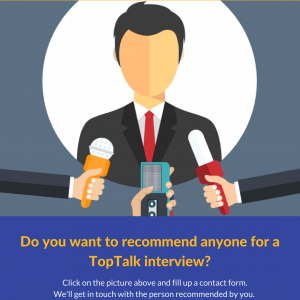 Amber Lloyd is the Global Leader HCM Strategy & Customer Engagement at Infor. She is a strategic leader in translating market opportunities, competitive threats, and customer needs into tangible features and functions into product strategy and vision. With experience in implementation, product strategy, consulting, development, sales, and services she has the unique ability lead across multiple functions. She has 25+ years of experience designing, developing, implementing and supporting Enterprise Employee Portals, Corporate Intranets, Human Capital Management (HCM) and Talent Management technologies. She has a strong track record of providing industry and product experience to companies such as Infor, Price Waterhouse, PeopleSoft, SumTotal, Schwab, McKesson Corporation, Vail Resorts, and Hewlett Packard.
Amber Lloyd is the Global Leader HCM Strategy & Customer Engagement at Infor. She is a strategic leader in translating market opportunities, competitive threats, and customer needs into tangible features and functions into product strategy and vision. With experience in implementation, product strategy, consulting, development, sales, and services she has the unique ability lead across multiple functions. She has 25+ years of experience designing, developing, implementing and supporting Enterprise Employee Portals, Corporate Intranets, Human Capital Management (HCM) and Talent Management technologies. She has a strong track record of providing industry and product experience to companies such as Infor, Price Waterhouse, PeopleSoft, SumTotal, Schwab, McKesson Corporation, Vail Resorts, and Hewlett Packard.
What does employee engagement mean to you?
Employee Engagement is often misunderstood to mean happiness or contentment but it really boils down to something more complex that all employees, managers and the c-suite care about. We’re all more productive, efficient, healthier, happier and effective in our jobs if we are in fact “engaged”. Being engaged boils down the factors that make you do your best and deliver the best possible outcomes in the workplace. For most people this is a combination of factors such as feeling valued, aligning with what your company stands for, being recognized for your contributions, connecting with others in the workplace, having the tools to perform, being empowered to utilize one’s strengths, being respected and having development and growth opportunities – it’s really simple things that make us engaged. And more highly engaged employees bring a greater sense of passion, interest, innovation, caring, performance and effectiveness to their jobs which ultimately helps the bottom line.
How to measure employee engagement?
There are many ways to measure employee engagement including surveys, assessments, even websites like Glassdoor can give an indication of employee engagement. Ultimately, it’s the pulse of the organization, what people are saying, feeling and believing about the company. If you’re not sure to ask your employees- “What’s working? Would you like to see differently?” If employees speak transparently with you it’s easy to determine if your workforce, in general, is engaged.
What are the common causes of employee disengagement?
Employees become disengaged for a number of reasons. It can range from employees not believing in the values of the organization (or lack of values), lack of adequate employee recognition, poor leadership, inequitable work conditions, poor retention strategies, lack of employee development. And in large part an employee’s manager and how that manager leads, speaks with and collaborates with that employee.
What are the drivers of employee engagement in today’s fast-moving world?
There’s been a lot in the media about how different generations engage and their ideal work environment. Regardless of an employee’s generation, I believe it’s offering a personalized experience to each employee, having the flexibility to support the needs of that employee. For some employees, this can mean flexible work schedules so they can ultimately support the demands of their family, it can mean working on a product, project that they are excited about, or it can simply mean being recognized for key contributions. The important thing to remember here is it’s never just one thing, it’s a combination of all these factors and the nuances vary by person.
What makes a really effective employee engagement programme? Any best practices to share.
When organizations put themselves in the shoes of their employees it’s easy to determine what needs to be done. It’s most important to create an environment of transparency, where leaders can ask employees about the culture of the organization. If employees feel they can safely share and voice their opinion they will tell you! They’ll likely tell you they want more recognition, more flexibility, more autonomy, more collaboration, less micromanaging, more clarity around values – whatever it is they will let you know if they feel they can safely and openly do that.
The best employee engagement program is one that takes into account a number of factors to empower the employee – equitable compensation, employee recognition programs (both financial, personal and social), employee development, career growth and opportunity, career transparency (view to what’s possible within the organization for each employee), comradery with colleagues, clear vision and values from the organization. But most importantly none of these programs can be independently managed by HR, they are much broader reaching and therefore need to engage all of the senior leadership to set the stage and drive these programs.

1 thoughts on “Amber Lloyd, Global Leader HCM Strategy & Customer Engagement, Infor”